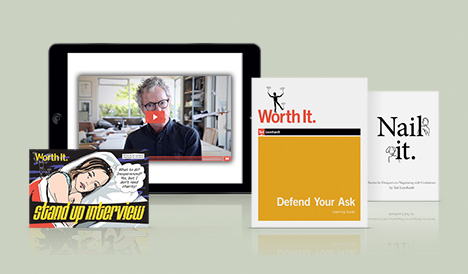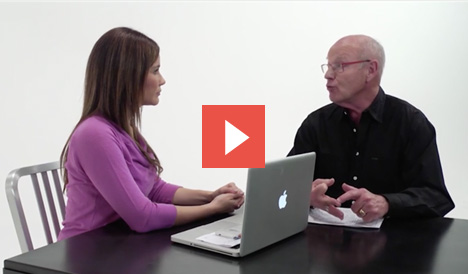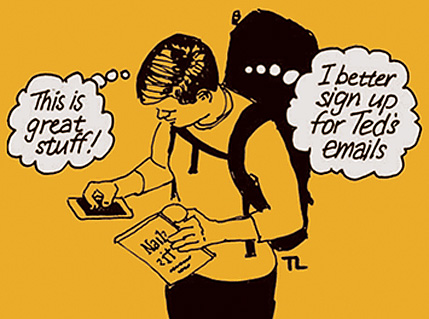4 Signs It’s Time to Walk Away from a Negotiation

It wasn’t going well. This was our second trip to meet the company’s principals, and we’d been talking for three days. It was costing a fortune, and I was tired of negotiating.
By now it was night, and the room was too small and too hot. Our prospective clients had been picking away at our price from every possible angle. We hadn’t budged. As far as I could tell, they didn’t have an alternative to hiring us, and I couldn’t imagine why they thought we might cave, but I was running out of patience. I fantasized about calling an abrupt halt to the meeting and leading my team out the door.
Walking away from a tense negotiation is never easy. It’s hard even after you can see things have stalled — when you know the potential deal is already dissolving. Just days or even hours ago, it seemed so promising. You were “all in” emotionally, and giving up on what felt so exciting would be painful. You’ll feel like wasted your time.
These steps can help you avoid getting to a point where you’re already in deep and considering cutting your losses — and to seriously assess when you should do that anyway.
What to Pin Down Before You Start Negotiating
There are some things you should get straight with yourself and your own team before you even agree to negotiate. Too often, these things become the substance of the negotiation itself. It’s smart to preemptively take some things off the negotiating table before you sit down at it. Pinpointing the potential deal breakers early can save everyone time and effort, not to mention the stress of a high-stakes negotiation that winds up breaking down.
The money. This may sound crass, but if the money’s not right, you’ll feel taken advantage of. If you don’t have a “below this, I walk” number firmly in mind, you might give away too much by increments; in the thick of things, sacrificing a little here and there doesn’t seem like so much each time you do it. Having a firm number as part of your prep is absolutely crucial.
Whether they’ve asked the right person. Always keep your competencies firmly in mind. Know what your competitive advantage is — and where your expertise runs out. If the opportunity strays too far from your skill set, you’ll need to pass. But first you need to be honest with yourself about what you can deliver and what you can’t.
Deadlines. The calendar doesn’t lie — which makes this one pretty simple. If the schedule for deliverables seems reasonable, great — then full steam ahead. If not, there’s usually room for some client check-in. But when actual dates are inflexible and unreasonable, you should politely decline. Have a long, hard, honest look at your calendar and determine how much time you could reasonably devote to this project, no matter how lucrative it may be.
Your own feelings. Ask yourself, “Do I like these people? Is what they’re doing interesting? Am I excited about it right from the beginning?” If so, it’s definitely worth talking further. If not, bow out early. You can’t do your best work if you don’t feel invested in it, especially if the going gets tough.
Walking away from an opportunity is not something anyone prefers. Only by really knowing your own criteria can you clearly and unemotionally decide whether the project is a good opportunity for you.
Of course, not everyone has the luxury of refusal to the same degree, and you may feel more pressure to take on an assignment at one time than you would at another. But try to be honest with yourself about how well you could stay motivated to work on something you may not be all that committed to, and remember that the other side has a right to quality work.
Whenever I walk away from an opportunity, I might initially regret that I couldn’t make the deal work. Eventually, though, I realize I’ve done the right thing: I’ve retained my self-respect — and probably gained their respect, too. Don’t burn bridges; there may always be another chance to work together.
When to Walk
Let’s say you’ve done your due diligence and everything sounded great on paper, and then you start talking. As a negotiation unfolds, there are several things to keep your eye on at once, and sometimes one or more of them starts looking unsatisfactory. If that happens, it’s your prerogative to walk away. In fact, that’s partly the point of a negotiation: It isn’t just about getting the best deal, it’s about figuring out whether a deal is possible in the first place. Here’s when it might be time to think twice.
The money isn’t right. This prospect reached out to you with an assignment, and you drew a mental line in the sand before agreeing to talk. In your first conversation about the project’s scope, you realize it would take $20,000 to do what they want done for $5,000. You politely explain why you can’t do it at that price, and if it’s the best they can offer, say goodbye. This one’s easy because there’s little emotional investment.
There are signs of bad behavior. Maybe your would-be clients come off as pushy or unwilling to cooperate for a reason you’ll never know. Either way, it’s time to disengage.
You don’t have all the resources to pull it off. Creatively, you do some things really well. But your prospects need something different. Sure, they came to you because of your expertise, but after talking, it becomes clear that their project still requires different skills than you possess. (Good thing you pinned down your own abilities and resources beforehand.) You may want to say “no, thanks” unless the opportunity is really promising enough for you to consider extending yourself — and feel confident you could still deliver results if you do.
The culture seems off. You’ve developed a certain set of clear convictions in your life (social, political, or otherwise), but the client shows just the opposite. This was my sad story once. I chose to go ahead, sensing the bad fit, because all the other aspects of the job seemed great. I told myself, “It won’t matter.” Later, I regretted my choice, and it took months to extract myself. I learned firsthand what culture clash was.
Now You’re Walking
You’ve said “no.” And that’s a very powerful word.
But it doesn’t necessarily mean it’s over. By walking away from a potential deal, you’ll learn how much the other party wants to work with you. I’ve walked enough times that I’ve learned to appreciate the power of “no.” If the client is seriously interested in working with you, pulling out will force them to try and get you back. Or they’ll be relieved and let you walk. Either way, you’ll get resolution.
Back in that stuffy conference room years ago late at night — tired, frustrated, and with no conscious plan — I finally stood up, slapped the table, and said, “We’re not getting anywhere. I’m tired. I’m going to bed, and tomorrow we’re catching the first flight home.”
And that was it — it shifted the entire dynamic. No more hedging, no more asking needless questions (or dodging them). Their attitude changed as fast as mine, and 10 minutes later, the deal was done — on our original terms. Just like that, we were out of there, and ready to move on to the real work.
Originally published at Fast Company.





1 Comment
Ted could you e mail us this article? Thx. Michael